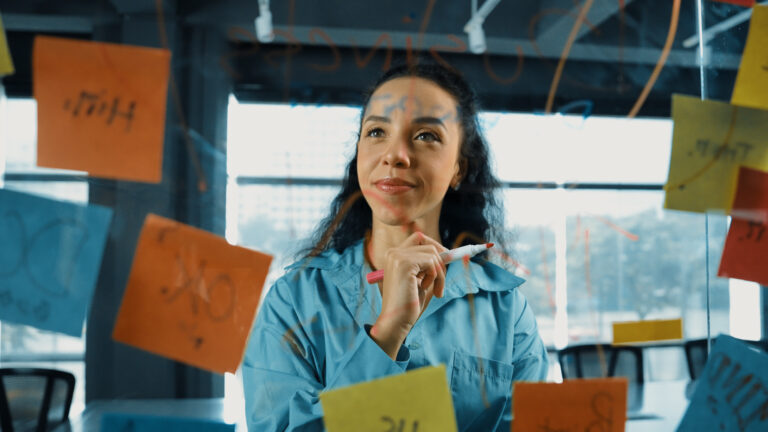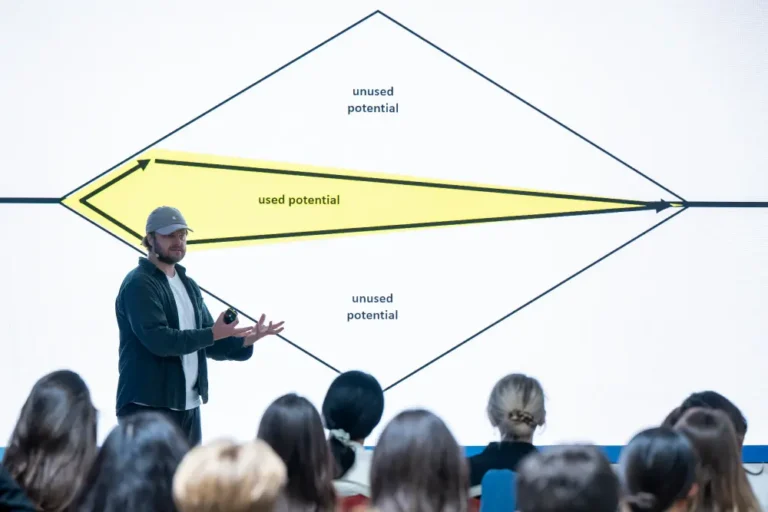Creativity is often seen as a mysterious gift. Some people seem to burst with ideas, while others struggle to come up with an original birthday greeting. But is creativity really something you’re born with – or can it be learned?
The short answer: yes, creativity is trainable. To understand why, it’s worth taking a closer look at what researchers have discovered in recent years about creative thinking and behavior.
The Myth of the Creative Genius
We all know the stories: Leonardo da Vinci, Albert Einstein, Steve Jobs – geniuses who changed the world with their creativity. These examples shape our collective image: creativity is a kind of “gift” reserved for a chosen few. If you weren’t born with it, you’re stuck with routine work.
This image is romantic but misleading. As early as the 1960s, creativity research began to show that every person has creative potential. Today, countless studies confirm that creativity is not the privilege of a few “geniuses,” but rather a set of behaviors that can be practiced and developed.
Creativity as Behavior – Insights from a Siemens Study
A recent research project conducted by TU Munich and Siemens (2021) made this point especially clear. The researchers analyzed how people act creatively in teams and identified 18 specific behaviors they call Creative Behaviors.
These range from asking questions to observing carefully, to visualizing ideas. The key insight: each of these patterns is visible and trainable.
“Creativity is not a mysterious gift but a set of behaviors that can be developed and strengthened over time.”
– Siemens × LMU Project Report (2021)
This fundamentally changes how we think about creativity. It’s not about waiting for a flash of inspiration, but about consciously applying certain ways of thinking and acting.
If you like the idea of training creativity like a muscle with a science-based approach, our Creativity Masterclass is an ideal next step. In this compact program, you’ll learn the most important Creative Behaviors and practice them directly. For organizations that first want to spark inspiration, a Keynote is a great entry point to open employees up to the topic and create curiosity.
A Useful Comparison: Creativity as a Muscle
The best way to understand creativity is to compare it to a muscle. Everyone has muscles – but not everyone trains them equally. Those who practice regularly build strength. Those who don’t lose flexibility.
The same applies to creative behavior:
- Combining ideas = like a muscle for flexibility
- Asking questions = like a muscle for agility
- Developing visions = like a muscle for endurance
The more often you use these “creative muscles,” the stronger they become. And just like in sports, there are different exercises for different muscles.
A Practical Example: Everyday Idea Generation
Imagine sitting with your team, tasked with developing a new product.
- Most stay silent because the task feels unclear.
- Someone makes a conventional suggestion: “Let’s just create a new version of X.”
- The discussion stalls.
What’s missing? Creative behaviors.
- An Unboxer would challenge assumptions: “Do we even need to make a product – could it be a service instead?”
- A Sensemaker would bring clarity: “Let’s map out the exact needs of our users.”
- An Imaginator would sketch a vision: “Picture how our customer might work in five years.”
New perspectives emerge not through genius but through conscious use of creative behaviors.
Can Everyone Be Creative?
Research is clear: yes. Every person has creative capabilities, though they may vary in strength. Some are naturally attuned to spotting patterns (Observers), while others are more comfortable building structures (Sensemakers).
Often, it’s a matter of perception. Many people believe they aren’t creative because they equate “creativity” with “artistic talent.” But creativity is much broader: rethinking problems, seeing alternatives, combining the unexpected. Anyone can learn to do this – whether you’re a designer, engineer, or manager.
Creativity in Teams – Why Diversity Matters
Creativity doesn’t flourish when only “the creatives” contribute ideas. Innovation thrives when different roles come together.
The Siemens study describes five types of creativity, each with its own function:
- Sensemaker – brings structure
- Cultivator – builds psychological safety
- Imaginator – inspires with visions
- Unboxer – challenges assumptions and breaks patterns
- Observer – spots signals and patterns
Successful teams include a mix of all five. While one person paints bold visions, another ensures they are grounded in reality. Creativity becomes a shared process.
A Common Block: Creative Anxiety
If creativity is so trainable, why do so many people feel blocked? Another important research insight helps explain this: Creative Anxiety.
A U.S. study by Daker, Cortes, Lyons & Green (2019) shows that many people feel anxious when asked to be creative. Much like test anxiety, this leads to stress responses: people fall back on familiar solutions rather than daring to try new ones.
The fear takes many forms:
- Fear of rejection (“My idea is ridiculous.”)
- Fear of uncertainty (“I don’t know where this will lead.”)
- Fear of failure (“If it doesn’t work, I’ll embarrass myself.”)
The good news: Creative Anxiety can be overcome. With safe environments and small routines, these inhibitions can be reduced step by step.
Everyday Tips to Train Creativity
- Ask “What if” questions
Regularly challenge yourself with “What if…?” scenarios. This trains you to see alternatives. - Think visually
Sketch your ideas instead of only describing them verbally. Simple drawings help clarify thoughts. - Observe intentionally
Spend ten minutes a day observing your surroundings: sounds, patterns, conversations. This strengthens your “Observer muscle.” - Create safe spaces
Encourage teams to share unfinished ideas without immediate criticism. This takes the fear out of being wrong. - Try small experiments
Instead of launching big projects right away, start with mini-experiments. This makes creativity manageable.
Conclusion: Creativity Can Be Learned
The research is clear: creativity isn’t a magical spark reserved for a few. It is a behavior that anyone can practice. The 18 Creative Behaviors provide concrete exercises, the five types help people understand themselves better, and insights into Creative Anxiety show how to dismantle blocks.
So if you think you’re “not creative,” take heart: creativity is not a matter of talent but of practice. And the more often we train it intentionally in everyday life, the more natural it becomes.licher wird sie.

